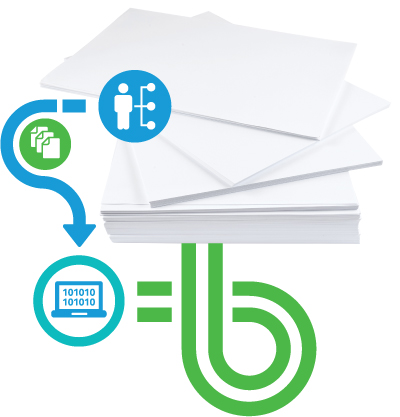A guest post by Elizabeth Bishop, Senior Director, Key Accounts at Domtar, a sustainable paper company supplying paper products and specialty papers for commercial, digital, and publishing printing.

Sometimes it’s not what you say but how you say it that gives you the edge. In speech, it might be the tone of your voice that warms up your words – or cools them down.
In print production, the paper you choose can impact the recipient’s emotional response as much as the content itself.
The medium and the message
Choosing the right paper is a creative decision made at the intersection of the science and the art of print — where the medium and the message bleed into one another. Get this decision right and your customers can use print to stand apart from the competition.
Start the paper conversation early
As a printer, it pays to open up the conversation at soon as possible so you can guide your customer to find the best option for their particular job. Of course, there will be times when the client knows exactly what they want, but there will be many opportunities to prove your value as a partner as well as a printer, advising on the pros and cons of the available paper types.
First principles
The first question you should address at the start of any print job is, Why are you printing this? What is it that you want to say and what reaction do you want to spark? Is it an emotional response or a practical action? Paper then becomes one of the many tools to shape the message. And with 850 types of paper in the Xerox catalog, there are plenty of different ways to say what you want to say.
Print with purpose
If you’re marketing a high-value product, it stands to reason that the paper you use should communicate a high-end, premier feel. But even when you’re not trying to encourage an immediate purchase, you’re still selling an image.
To achieve this, start with a mid-range, professional line of papers that are a little heavier and brighter than everyday paper. For further differentiation, look at a softer satin feel or a coated paper for marketing materials that really ‘pop’.
Many paper stocks today are partially or fully recycled, and these are perfect for planet-friendly clients and audiences.
Printing to last
There’s also the question of durability. Will it be a one-time mailer, a billboard poster that needs to withstand sunshine, an ID card that will live in a wallet for a year, or a military map that has to survive hot and cold weather or extremes of humidity?
At Domtar, this is where we start to look at the Xerox Revolution™ range of papers. These are highly specialized, synthetic paper types that are tested under lab conditions. We recreate high humidity and zero humidity conditions, and use oxygen-rich or cold chambers to really push the paper to its limits. Then these resilient papers are packaged up pre-loaded with their optimal settings — so the printer knows how to automatically pre-configure for best results.
Productivity-boosting paper
Pre-loaded settings are just one example of how paper choice can affect workflows. Other custom formats like pre-perforated substrates remove the need for time-consuming post-press finishing that some billing communications traditionally call for. And synthetic papers can achieve the durability required for simple ID cards without the need for lamination. This workflow boost is a huge differentiator in a promising growth area, with lots of demand for this kind of printing coming from government bodies and private members’ societies.
 Personal touch
Personal touch
Premium papers do come with higher costs, so it may not be feasible for all customers to opt for these high-end substrates. Instead, efforts can be directed where the greatest returns are likely to be earned. For example, a healthy customer database can be segmented for this purpose and different paper types used for every engagement with various contact groups.
This was the approach Xerox took to help a printer win the business of a large hotel brand looking to market its timeshare properties to its most loyal customers. The top two percent of their clientele were identified and targeted with a campaign that featured a personalized card pouch mailed to them with a USB drive inside. The drive contained information about the timeshares selected especially for these hero customers. The variable data personalization and choice of materials meant the campaign required greater investment, but a 40 percent response rate proved that it can pay off.
A creative choice
It’s a print provider’s job to help their customers communicate with intent. The desired outcome will vary depending on the context, but hard sell or gentle nurture, the ultimate goal is to elicit a response. Increasingly, as they make the transition to offer more marketing services and truly become a valued partner, printers are exploring creative ways to engage audiences across digital channels and formats. And the list of new methods keeps growing.
The same remains true of print. Swap one paper for another and your message changes. The words may not, but the emotion conveyed does. It’s where creative decision-making impacts a print campaign’s chance to successfully engage audiences. It’s where the art and the science of print production meet. And it’s where printers need to be steering the conversation.



